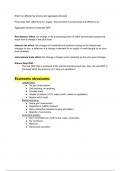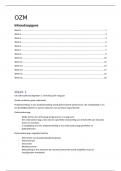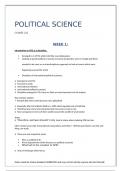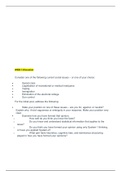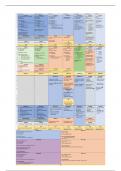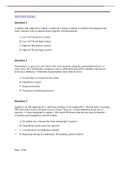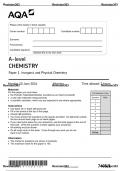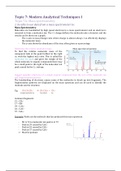specify the woman is, which creates a tone of
curiosity
Childlike imagery- tone of innocence
The woman’s skin may act as a
The fact that the woman ‘covered it up’
metaphor for the town.
suggests that she is perhaps ashamed of
Representing her identity. The
her identity, or she has perhaps struggled
town is a part of her identity A woman’s skin was a map of the town
with identity as she desires to hide her
Where she’d grown from a child. true self
The fact that the woman ‘covered
When she went out, she covered it up
it up’ suggests that she is perhaps
ashamed of her identity, or she With a dress, with a shawl, with a hat,
has perhaps struggled with
identity as she desires to hide her With mitts or a muff, with leggings, trousers Sense of uncertainty and confusion
true self
Or jeans, with an ankle- length cloak, hooded
The verb ‘grew’– the map is And fingertip- sleeved. But birth- mark, tattoo
not only a representation of The A-Z street map grew, a precise second skin,
what she is at the present,
but also the future and past Broad is she binged, thin when she slimmed
A precis of where to end or go back or begin
The poem begins with ‘A woman’s’, lacking specificity. This could allow for Duffy to represent ‘All
Women’ within the poem, this being a metaphor to represent the female experience. Both ’skin’ and
‘map’ are given the same metrical weight within the line. Duffy connects these two ideas, allowing the
woman to represent both of these ideas simultaneously.
The use of asyndeton within the first stanza demonstrates the woman’s desire to hide her map. The map
represents her identity, with ‘dress, with a shawl, with a hat’ all ineffectively covering her skin. Asyndeton
allows Duffy to place item over item on her skin, hiding her identity under clothes and other superficial
items.
The internal rhyme between ‘tattoo’ and ‘map grew’ displays the permanence of her ‘map’ identity.
Practically impossible to remove, the ‘tattoo’ ‘map’ is inescapable for the Map-Woman. She cannot
escape her identity, it is permanently etched onto her skin. The internal rhyme is emblematic of this
connection, reflecting a sense of togetherness.
The end of the first stanza seems uncertain, ‘to end or go back or begin’ displaying a mind vacillating.
Duffy’s protagonist cannot decide on which direction to take. This can be understood as a representation
for life, the infinite possibilities stretching out before her. The equal syntax, each preceded by ‘or’
furthers the emphasis on the possibility. The character’s whole life stretches before her in this phrase –
ominously beginning the rest of the poem.
, Arguably the woman is vital to the
town. The two are interdependent
The use of the noun ‘breast’ also
centers the poem on a female
- Very explicit, perhaps Duffy
experience, connecting this poem to
is admiring the beauty of
the rest of her works
women
- ‘breasts and ‘town’ connects
These ‘alleys’ ‘streets’ and ‘walks’ in the body and the town
which she was brought up, will together. Once again,
perhaps remain with her forever on symbolizing the relationship
Over the breast was heart of the town,
her body. Once again showing the between her identity and
strong relationship between the From the Market square to the Picture house the town
woman’s body and her identity - This is emblematic of the
By the way of St Mary’s church, a triangle
It’s almost as if she cant get rid of content of the poem, placed
her past identity- it will always haunt of alleys and streets and walks, her veins etched on the woman’s skin
her
like shadows below the lines of the map, the river
Perhaps these people were
significant in the woman’s life; an artery snaking north to her neck. She knew
they may have influenced her life
in some way if you crossed the bridge at her nipple, took a left
and a right, you would come to the graves,
the grey- haired teachers of English and History,
the solider boys, the Mayors and councillors
One of the most important lines in the poem, ‘Over her breast was the heart of the town’, stems in this
second stanza. Duffy connects ‘town’ and ‘breast’, linking place and body. This is emblematic of the
content of the poem as a whole, place etched on the woman’s skin. Yet, this also suggests how important
a hometown is to someone. No matter if you hate or love where you were born, you can never change
the fact that you were born there. The ‘heart’, representing the centre of this ‘town’ is above the
woman’s ‘breast’, being held close to her own heart. This represents how she keeps her hometown deep
inside her, the memories of that place-shaping her into the person she is. Using ‘breast’ also centres the
poem on a uniquely female perspective, Duffy further connecting with other poems in ‘Feminine
Gospels’.
The Map-Woman is comfortable in her own body. She ‘knew’ it off by heart, recognizing the layout of the
female body. Duffy presents an intimate view of femininity, tracing the ‘shadow below the lines of the
map’, the core of who this woman is. Duffy constantly uses a blend of map and body semantics, ‘north to
her neck’ fusing these ideas into one.
, Duffy is a feminist, including the
Juxtaposition- the verbs ’marry nouns ‘mothers’ and ‘wives’ is
and die’ in the same line successful in reinforcing
accompanied with the femininity
polysyndeton perhaps presents
the linear and cyclical nature of Simile- Duffy states that ’their
life bodies [were] fading into the
earth like old print’- this alongside
Perhaps this is what the woman
the image of the ‘gray haired
used to do? Therefore, she is
teachers if English and history,
remising
the beloved mothers and wives, the nuns and priests, creates a semantic field of death
and old age
their bodies fading into the earth like old print
Juxtaposition- the verbs ’marry on a page. You could sit on a wooden bench Alternative interpretation: the
and die’ in the same line simile here could represent death
accompanied with the as a wedding pair ran, ringed, from the church, in old age, like the ‘grey- haired
polysyndeton perhaps presents teachers’ they will also fade into
confetti skittering over the marble stones,
the linear and cyclical nature of the ‘second skin’ that the woman
life the big bell hammering hail from the sky, and wonder has, and into the ‘earth’- the
Perhaps this is what the woman woman’s body
who you would marry and how and where and when
used to do? Therefore, she is
you would die; or find yourself in the coffee house
Implying that they shall all remain
remising
with the woman, despite
nearby, waiting for time to start, your tiny face ‘fading’– she cannot escape her
past
trapped in the window’s bottle thick glass like a fly.
Duffy uses asyndeton across the second and third stanzas, detailing those who lived in her town
before her. People who occupy a town are perhaps just as important as the town itself. Duffy
explores ‘grey-haired teachers of English and History’, those which had an impact on her life. Yet
even those that did not directly touch her life, ‘mothers and wives’, they still had an impact on the
town. Everyone from that area grew up with something in common, Duffy using asyndeton to
connect those that lived there. They are like an ‘old print/on a page’, fading but still present. Duffy’s
use of ‘print’ contains a sense of permanence, furthering the repeated idea in the poem.
Duffy uses polysyndeton across ‘marry and how and where and when’ to show the sequential nature
of life. One thing leads to the next, time marching on to an unstoppable beat. Duffy explores this
idea, looking from ‘marry’ ‘die’ in the space of a line – someone’s adult life summarised in this small
amount of poetry.

